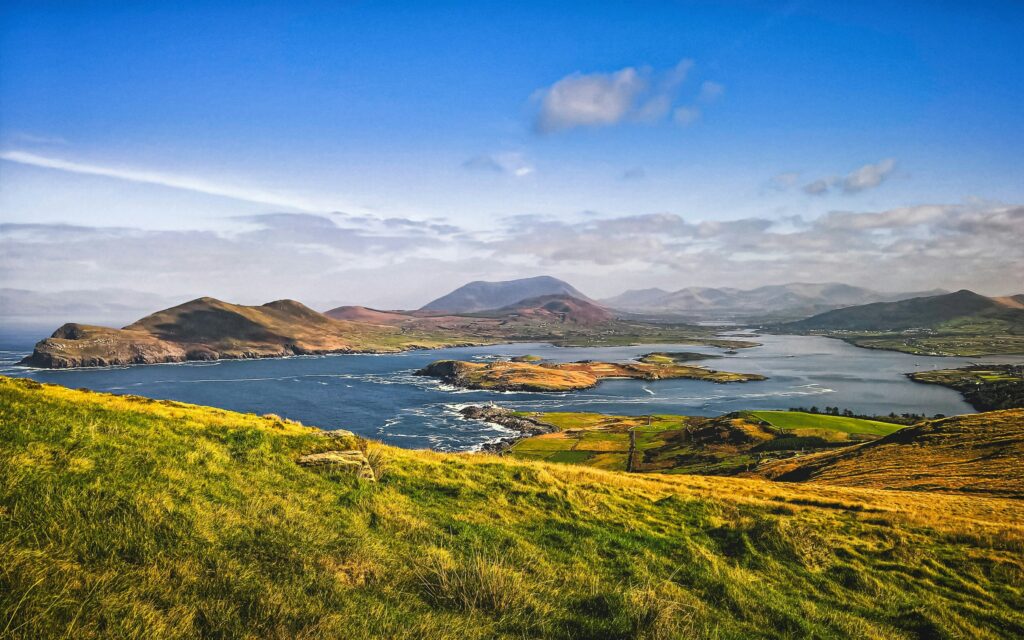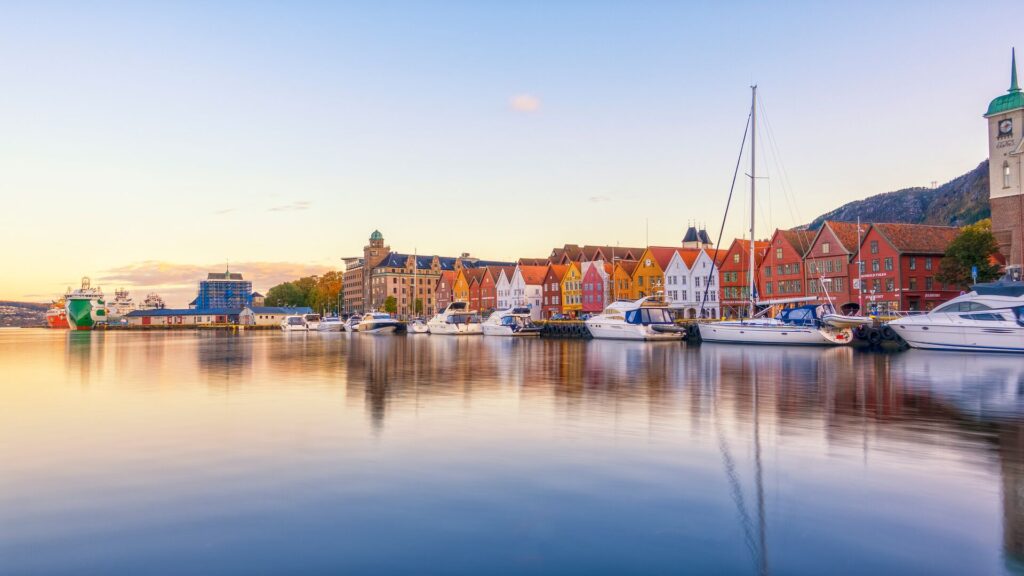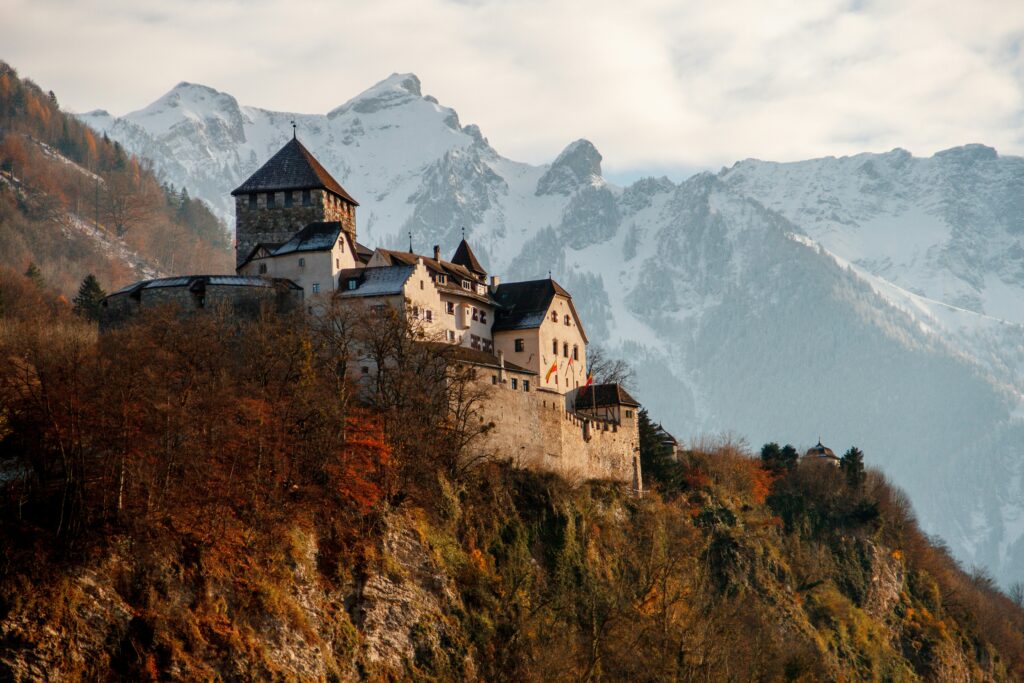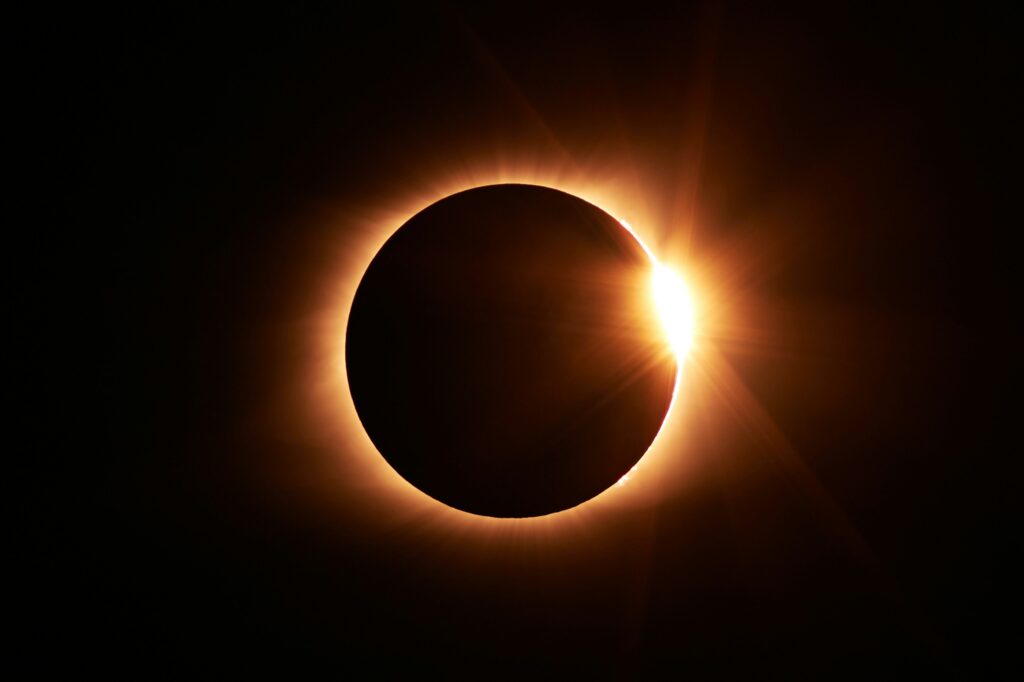Free, Solo: What I’ve Learned About the Power of Women’s Travel
Since her first foray into travel writing at age 25, Lavinia Spalding has published 11 books, including 6 editions of The Best Women’s Travel Writing. As series editor, she works to amplify the voices of women writers. Here, she shares how travel has impacted and influenced them.
One evening in 2011, surrounded by tall stacks of paper, I sat on my couch, crying. This wouldn’t be unusual except minutes earlier I’d been laughing, and minutes before that, my arms had been covered in goosebumps. I was all over the place that night, both emotionally and geographically.
I had been hired by the publishing house Travelers’ Tales to edit one of their anthologies, The Best Women’s Travel Writing, and part of my job was reading through hundreds of essay submissions. The thirty-three true travel stories I ultimately selected – about eating ice cream in Afghanistan, searching for a soccer jersey in Bhutan, serving tequila to a health inspector in Cuba, fishing for piranhas in Ecuador, healing generation wounds in France, teaching teenage girls in Guyana, collecting coup testimonials in Haiti, eating Lardo in Italy, dining with a mobster in Japan, finding a home in Kenya, and dozens of others from countries up and down the alphabet – rearranged my perceptions of possibility. Many essays recounted solo experiences, sometimes in countries I’d never even considered visiting. I was undone by how women navigate the world with such intention and courage.
When the anthology was published, though, something surprising happened. During the Q&A period of almost every publicity event for the anthology, a different woman would raise her hand and inquire about traveling solo: Did I ever do it, she’d ask. Was it safe? How should she start? I’d reply that I loved traveling on my own, and that while common sense was required, I found it generally safe. As for how to start, I’d say, “Book a flight.”
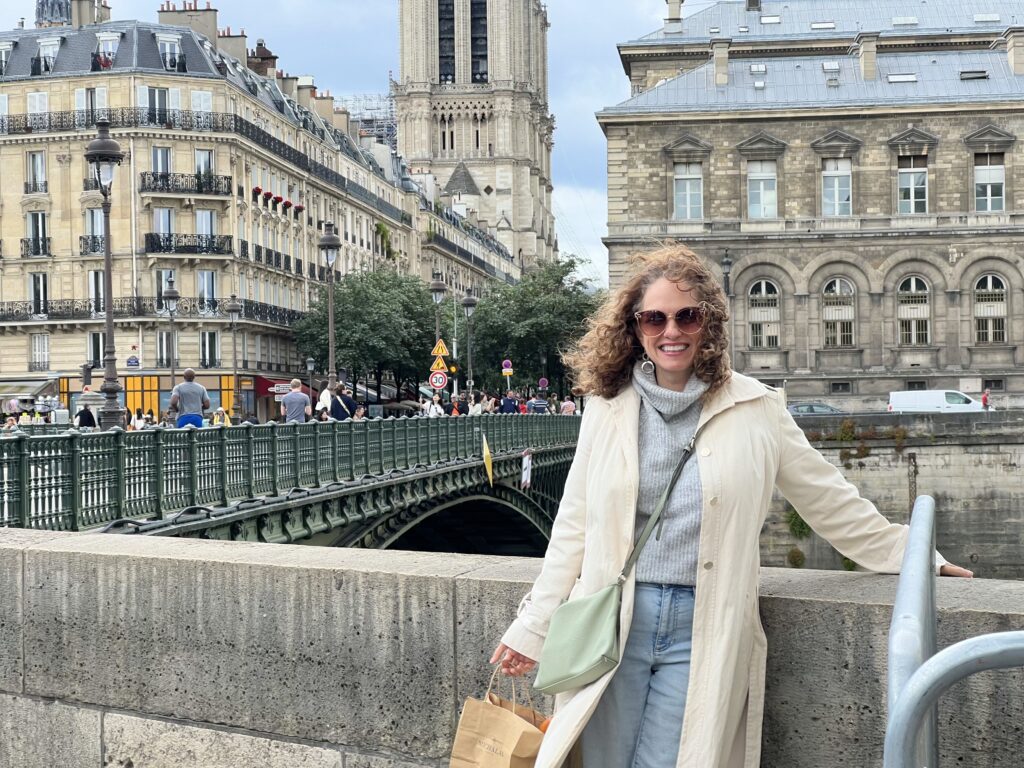
Lavinia in Paris, near Notre-Dame Cathedral
There’s a sentence I love in “The Risky Path,” an essay by Holly Morris in The Best Women’s Travel Writing Volume 9:
“More than a decade ago,” she wrote,” when desk life felt stultifying, I looked at fear and renamed it potential.” Morris ended up quitting her desk job to travel the world, eventually creating the award-winning series Adventure Divas and selling it to PBS. “I’ve since learned,” she wrote, “that I’m my best self in motion, courting the unexpected and running not away from what I fear but toward it.”
Courting the unexpected and running toward fear is a popular theme in the anthology. A perfect example is Eva Holland’s essay “A Strange Ambition” in The Best Women’s Travel Writing, Volume 12, which recounts two weeks in an extreme polar training course near the Arctic Circle in Canada. About her team’s final 72-hour test – which included skiing across ice in harnesses, towing heavy pulks in temperatures as low as minus forty Fahrenheit, and pitching a tent in gale-force gusts – she wrote, “My excitement arm-wrestled with fear and dread.”
Spoiler alert: It was harrowing, but Holland’s team survived and passed the test. And later that night, she stepped out of her tent and saw the northern lights. What she wrote sums up my feelings about travel: “Here was that same lesson I had learned and relearned over these two weeks. Joy and awe would always win out, if I let them.”
Another passage that stays with me is from the essay “Of Mountains and Men,” by Kasha Rigby, who was a pioneering skier and a dear friend. Describing an arduous mountaineering expedition in India, Rigby described how, before skiing a first descent from a 5,000-foot mountain face, her team of four women ascended a glacier connected by a rope. She wrote, “We develop an intimate, unerring belief in each other’s strength and steadiness.”
The passage resonates with me not because there’s a single chance I would ever ascend a glacier, but because this same abiding trust in women is a fundamental reason I continue traveling, despite occasional challenges and misadventures.
Take my own first botched attempt at solo travel, 25 years ago. After backpacking with friends in Thailand, I was heading to Malaysia to spend two weeks alone when I became mysteriously separated from my passport, plane tickets, and all my money. I never made it to Malaysia on that trip, but I weathered the ordeal thanks to multiple women who buoyed me, gave me money, helped me secure a new passport, and reaffirmed my faith in goodness.
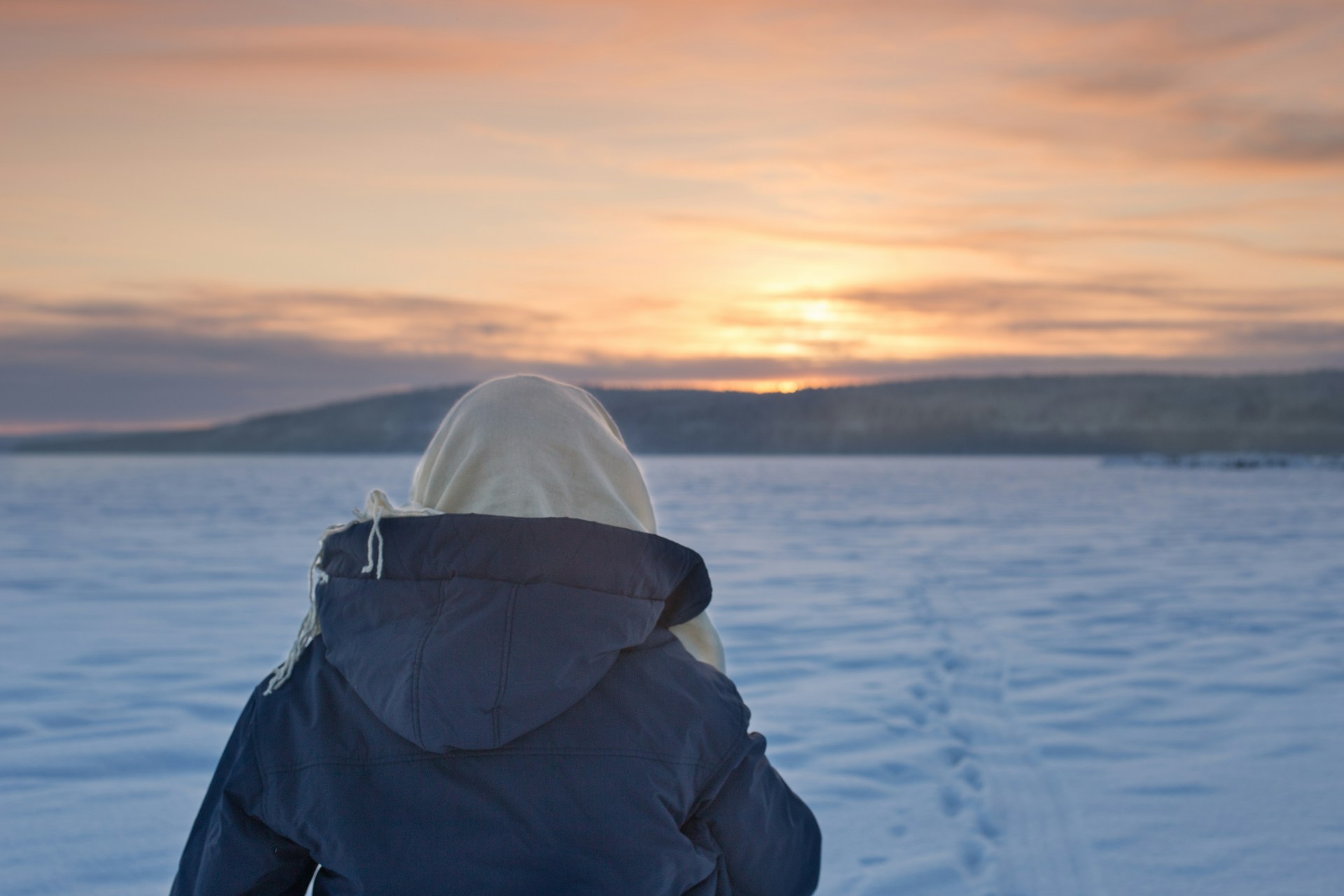
The Best Women’s Travel Writing overflows with similar stories of women being supported by other women—being fed, housed, cared for in sickness, coached in cultural understanding, encouraged to become their boldest selves, watched over, comforted, and befriended.
I’m fifty-five now, and although I do keep a closer eye on my possessions when I travel, I never really worry. Something pivotal cemented during that ill-fated backpacking adventure: I know that even traveling solo, I’m unlikely to be alone, and I’ll always return home richer in friends. And the bonds I’ve forged out in the world have special qualities; they’re potent, enduring, and sprinkled with a dreamlike fairy dust that lingers long after the trip ends. To me, that’s reason enough to travel.
Of course, many more reasons exist – and sometimes, movement itself is the sole purpose. In her essay “Traveling with Ghosts,” Jacqueline Luckett wrote, “I, too, was traveling alone — no celebrations of independence or otherwise. Merely another trip to quell my restlessness, to be someplace other than where I was.”
If I’ve learned one thing from reading thousands of essays by now and publishing almost 200, it’s that the reasons women travel, and the rewards for doing so, are infinite. We travel to be in nature and in cities, to play and work and teach and learn and grow. We travel to experience humility and awe. We travel to challenge ourselves, widen our worldview, combat complacency, and upend entrenched beliefs. We travel to retrace roots and reveal unknown parts of ourselves, and to deepen our spiritual and creative paths. We travel to bear witness, be of service, heal and be healed. We travel to feel the ineffable joy and the exertion and struggle of travel. We travel to pay more attention.
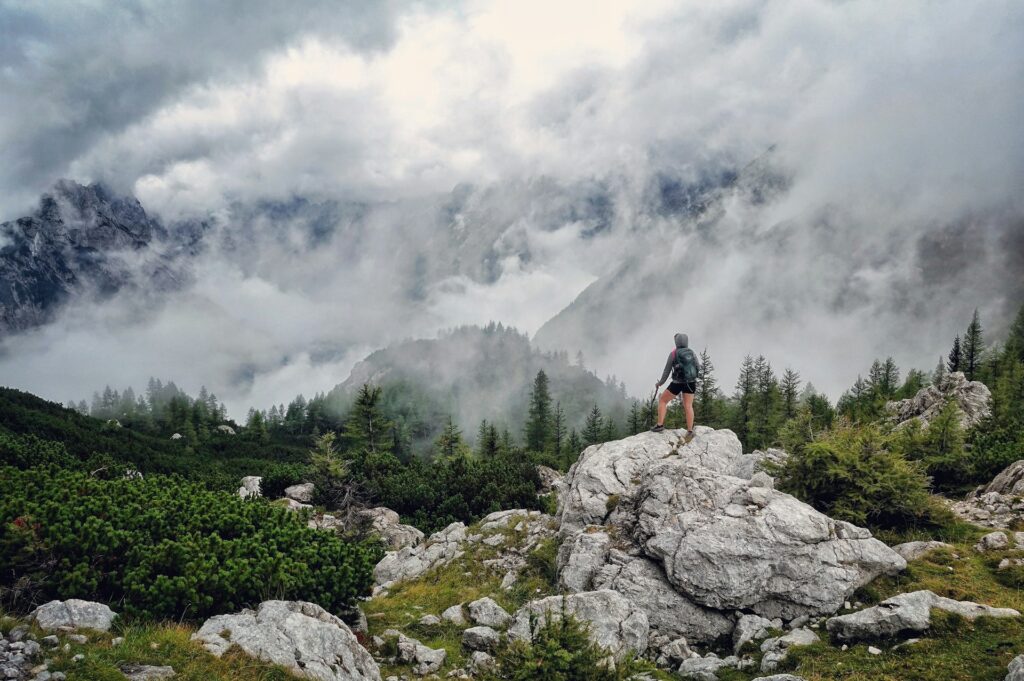
In her essay “Sea Change,” Candace Rose Rardon wrote, “It was only through travel that I’d learned to stay present in each moment of my life.”
It’s been fourteen years since I started editing the Best Women’s Travel Writing, and some things have changed: Instead of receiving hundreds of submissions for each edition, I receive thousands (and thankfully, I now have first readers who help sift through the stories). Though I still cry and laugh and get goosebumps while reading essays on my couch, my laptop has replaced the stacks of paper. I’m delighted that more and more travel stories come from older women, as well as BIPOC, queer, and disabled writers, and members of other marginalized groups. I’m encouraged by how many essays focus on slow travel and important local issues. I find writers increasingly thoughtful about their impact on the places and communities they visit, and on the planet itself.
And something else has changed over the years: travel statistics. We women now comprise 70 percent of travelers and make 82 percent of travel decisions. The average adventure traveler is a 47-year-old woman, and the majority of solo travelers are – you guessed it – women.
Another difference I’ve noticed is that I field fewer questions about going it alone. More often I’m asked, “What are your favorite places to travel?” and “How can we become better travelers?”
“Great questions,” I always say, because they really are.

LIKED THIS POST? SHARE WITH YOUR COMMUNITY

